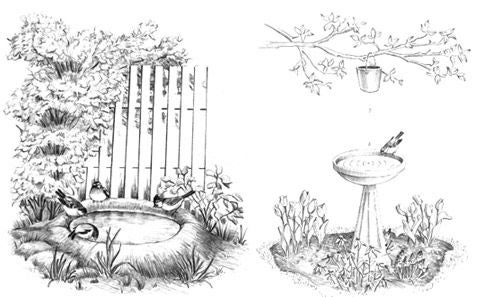
Background
A birdbath in your backyard can attract everything from songbirds to small mammals, reptiles, amphibians, and insects.
Procedure
- Creating a birdbath can be as simple as placing a garbage can lid full of water upside down on the ground.
- If cats are a problem, a birdbath on a pedestal or hanging from a tree is the best solution. You can offer two bathing spots - a traditional birdbath and one on the ground - then wait to see which is more popular.
- The bath should slope gradually towards the middle, have a rough surface, and be no more than 6 cm deep.
- Place stones in the bottom of plastic and metal containers to give them an irregular surface.
- If your birdbath is ignored, don't despair. Try placing it at different heights and in different spots on your property until you find the right setup.
- Wildlife can often be lured by the tempting sound of dripping water. Try rigging a recycled plastic or metal container from a branch just over the bath. An old coffee can is perfect. Paint it black, dull green, or brown - birds are suspicious of bright colours - and make a tiny hole in the bottom.
- Fill the container with water. You'll have to experiment with getting the drip just right - not too fast, or you'll be busy filling the container every half hour. Try punching a small hole, then plugging it with a wad of fabric.
- Robins and other birds are often attracted to a sprinkler in hot weather because moist soil and the sound of raindrops bring worms to the surface. There are plenty of sprinklers on the market that use much less water than conventional ones, so you can practise water conservation. The best time for watering is the coolest part of the day - before 10 a.m. - but only when the air is calm, as the wind will evaporate water quickly.
Maintenance
- Top up birdbaths with fresh water every day or two.
- Scrub them out regularly with a stiff-bristled brush.






